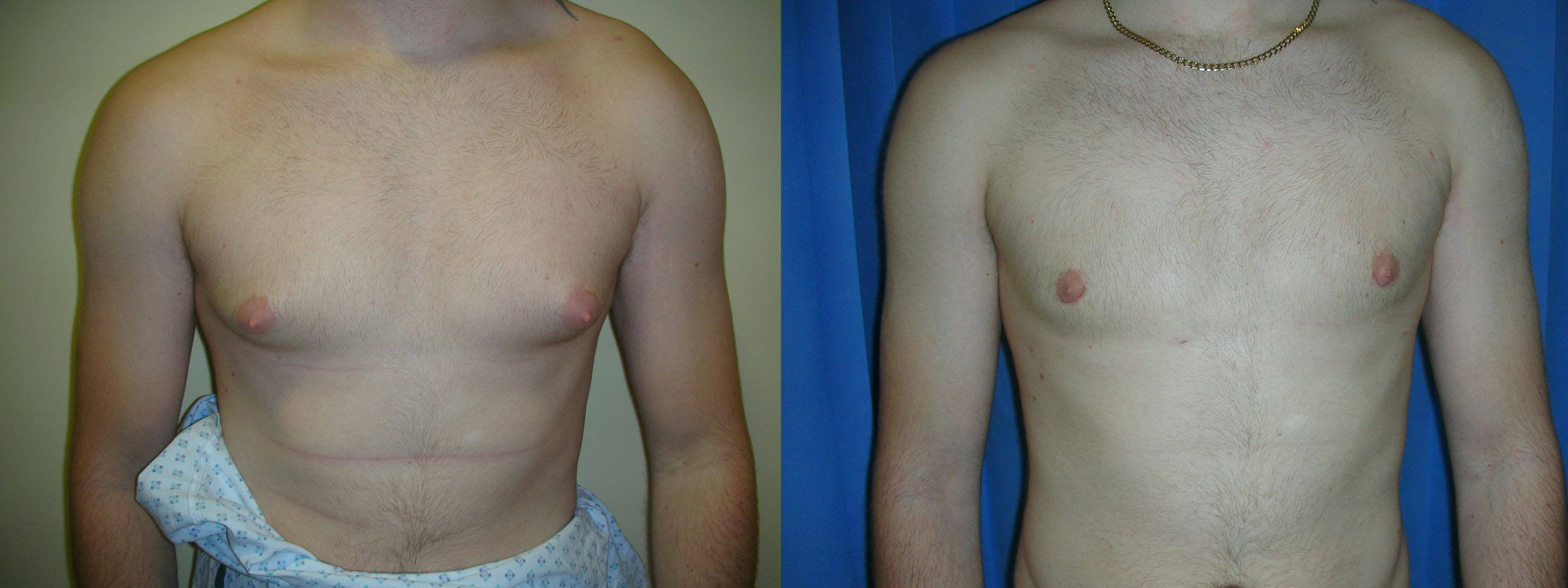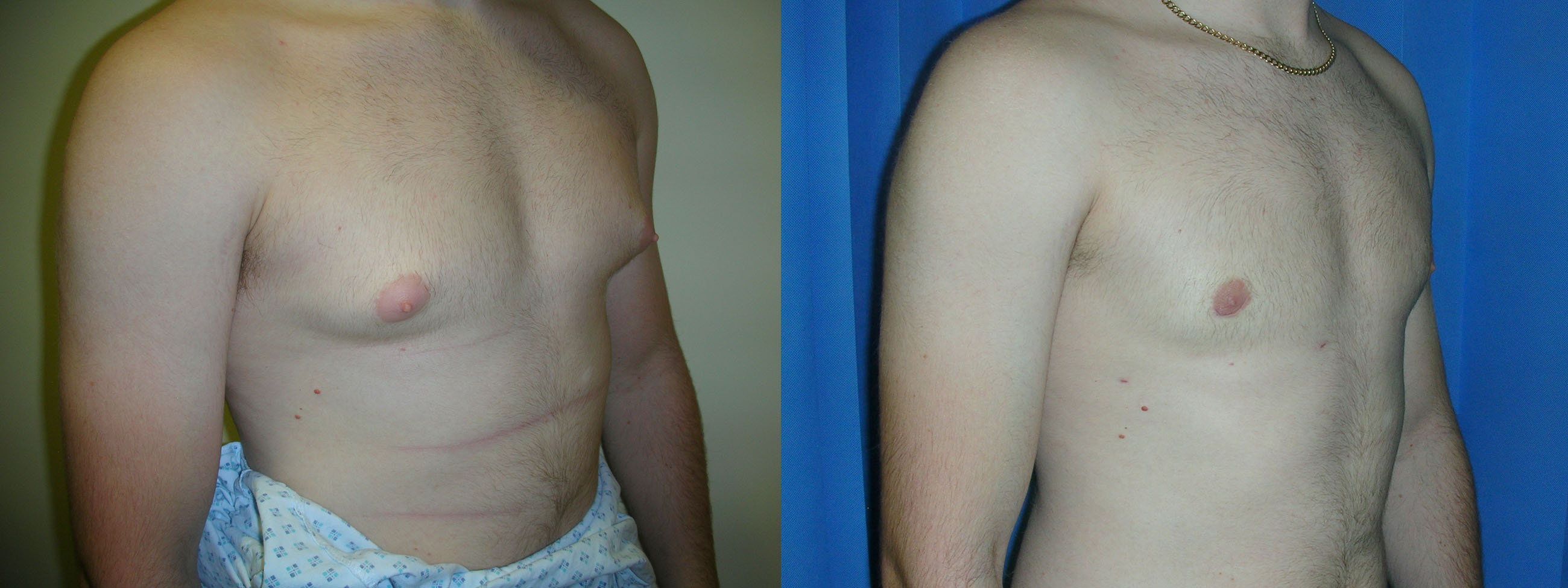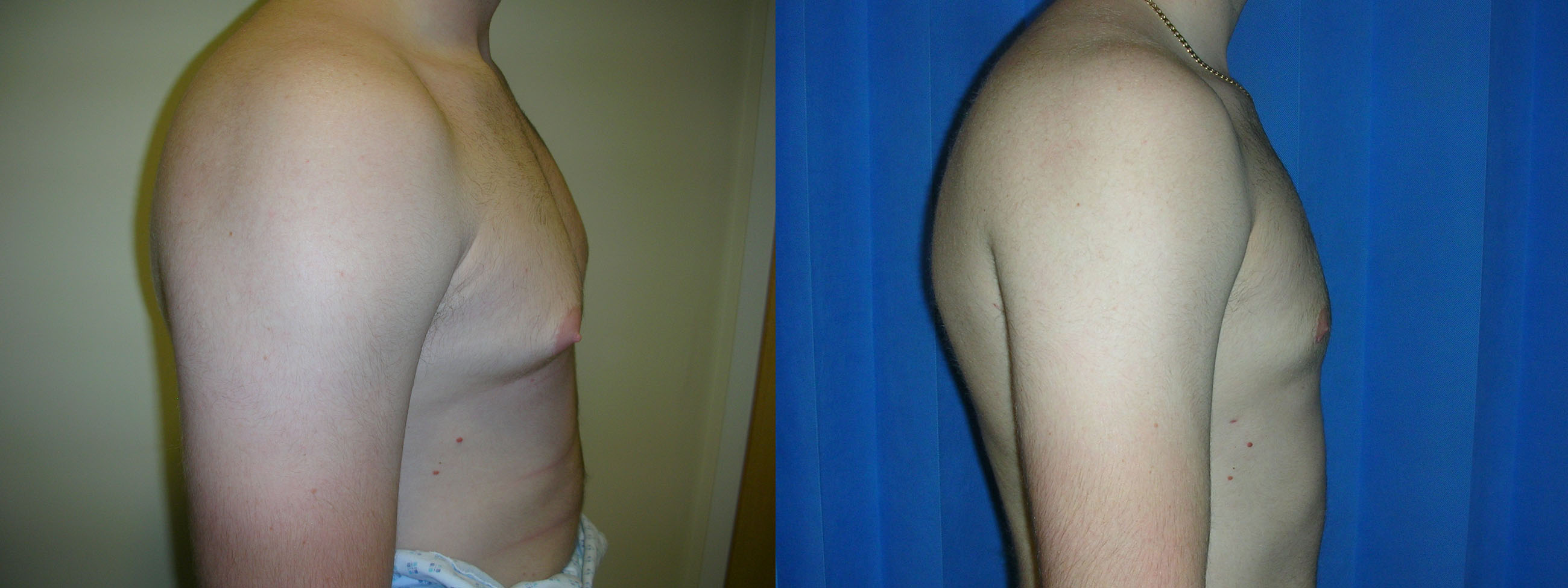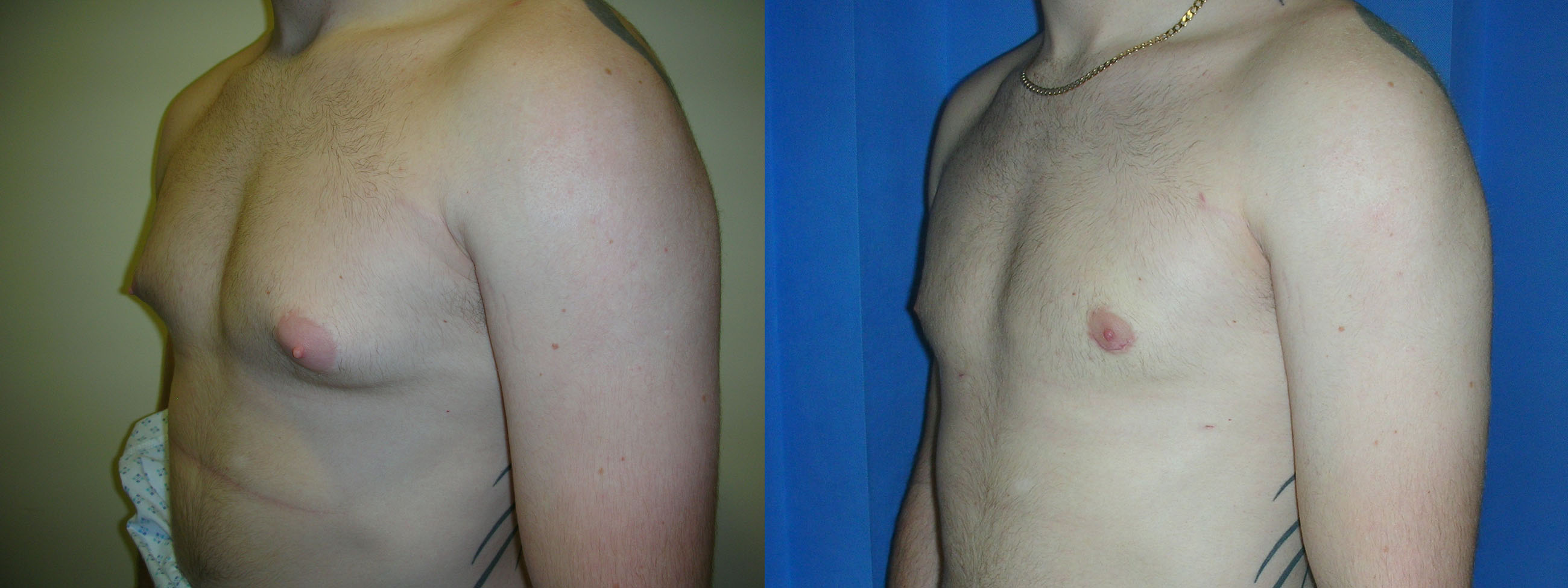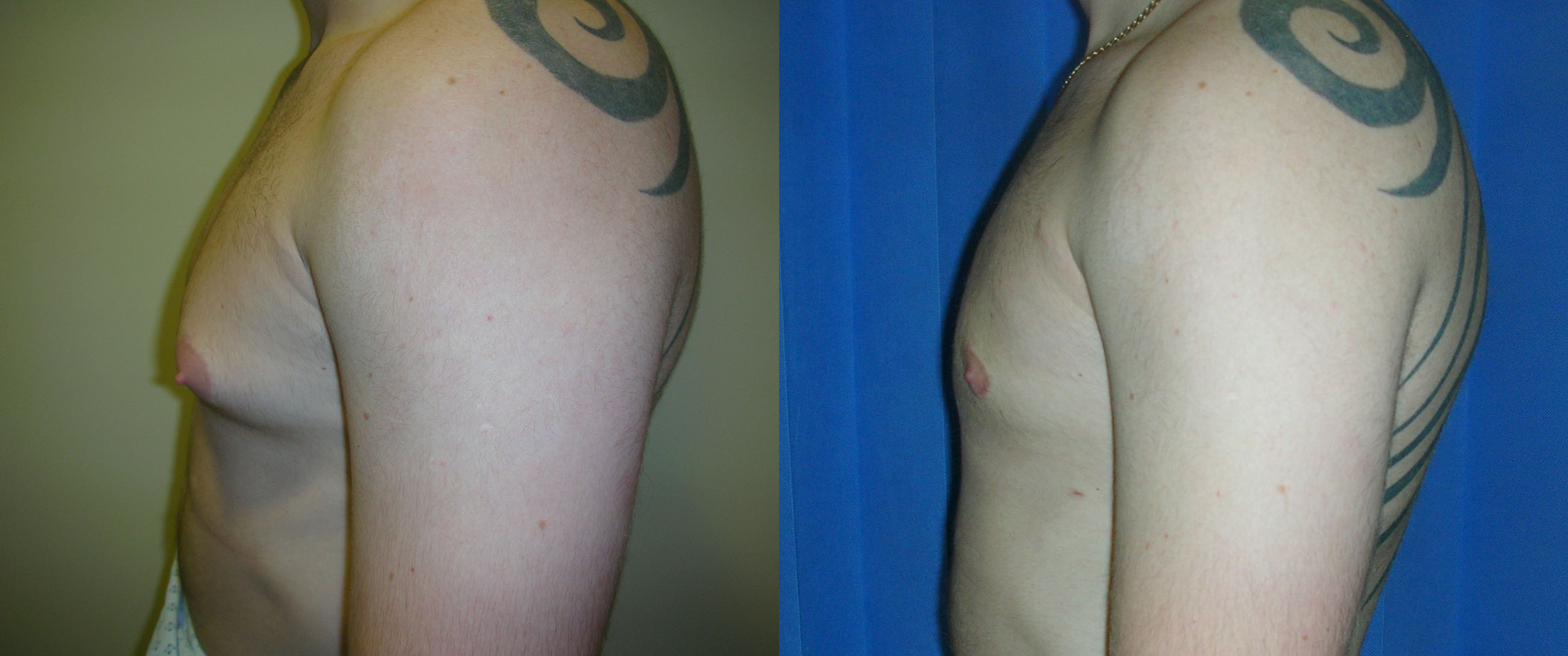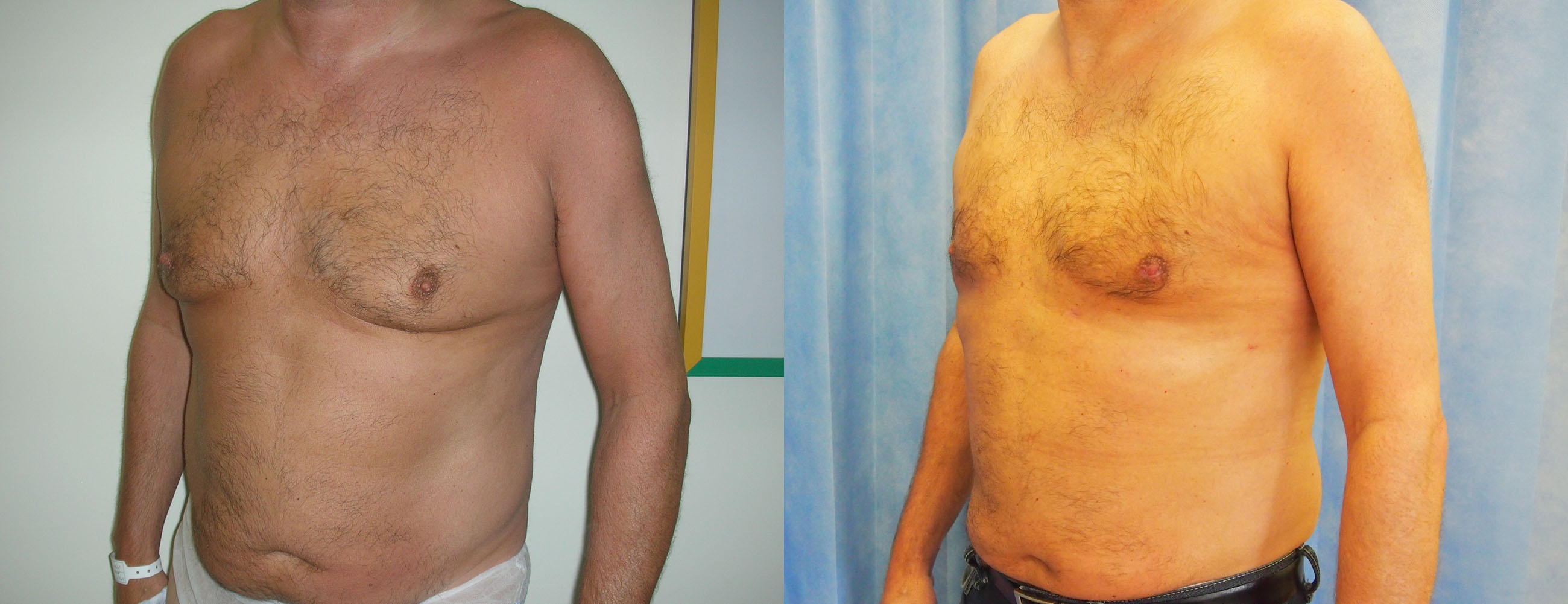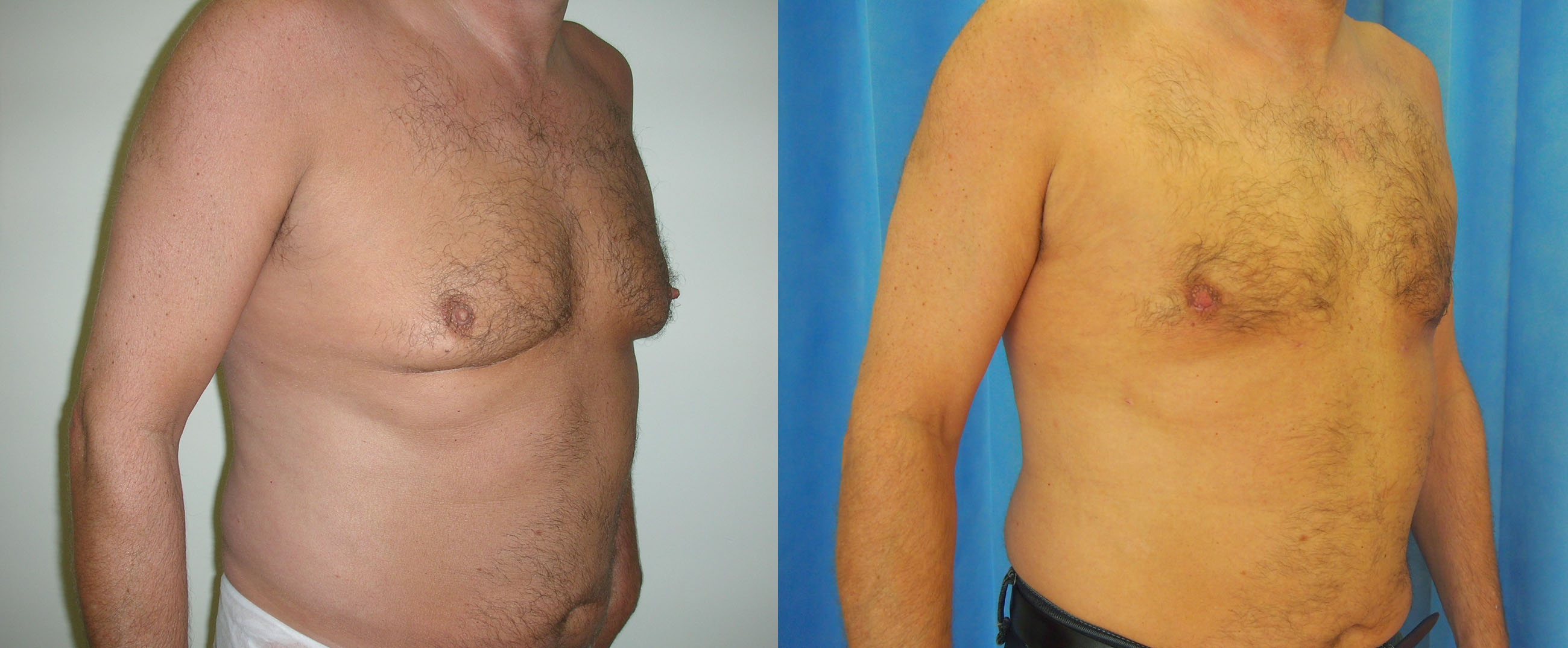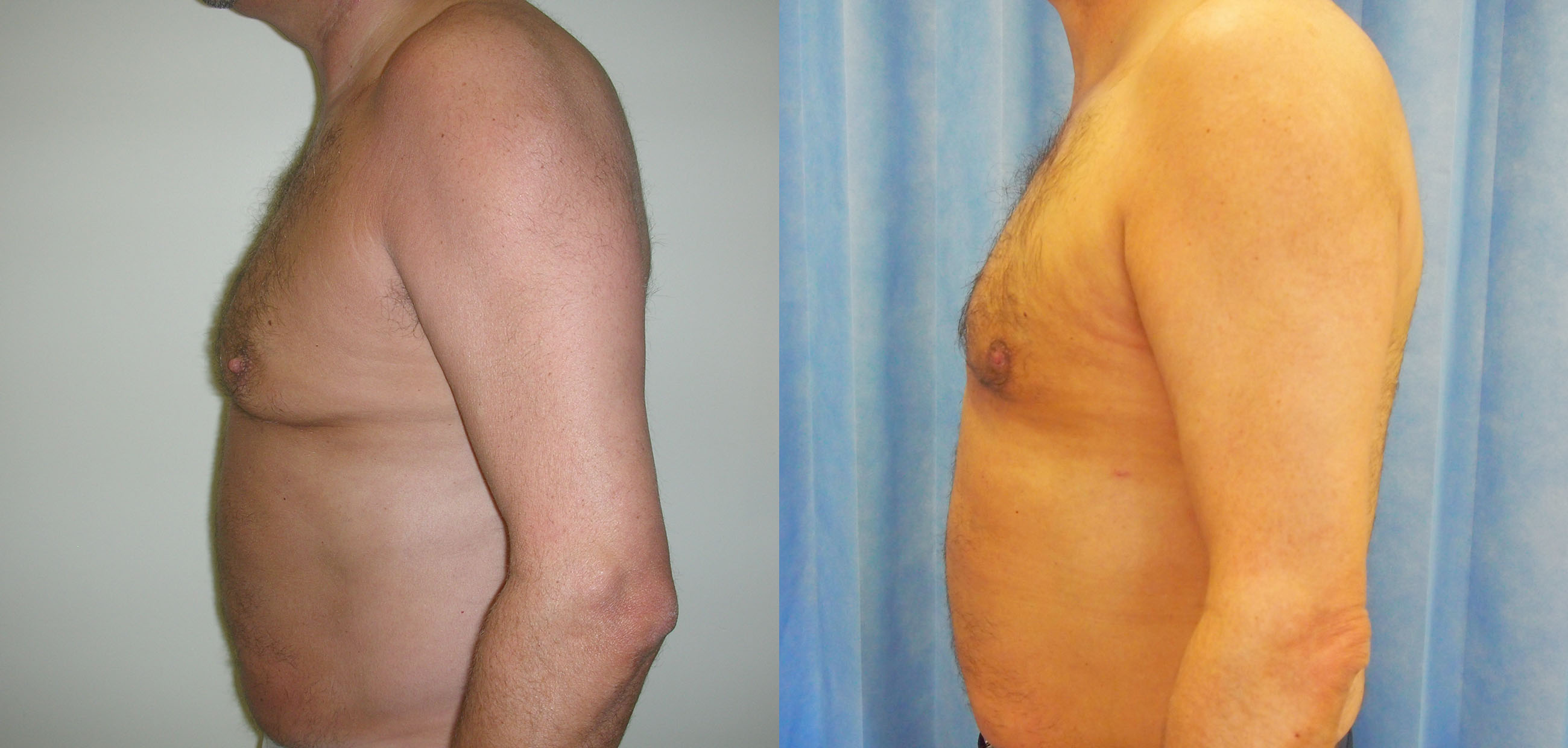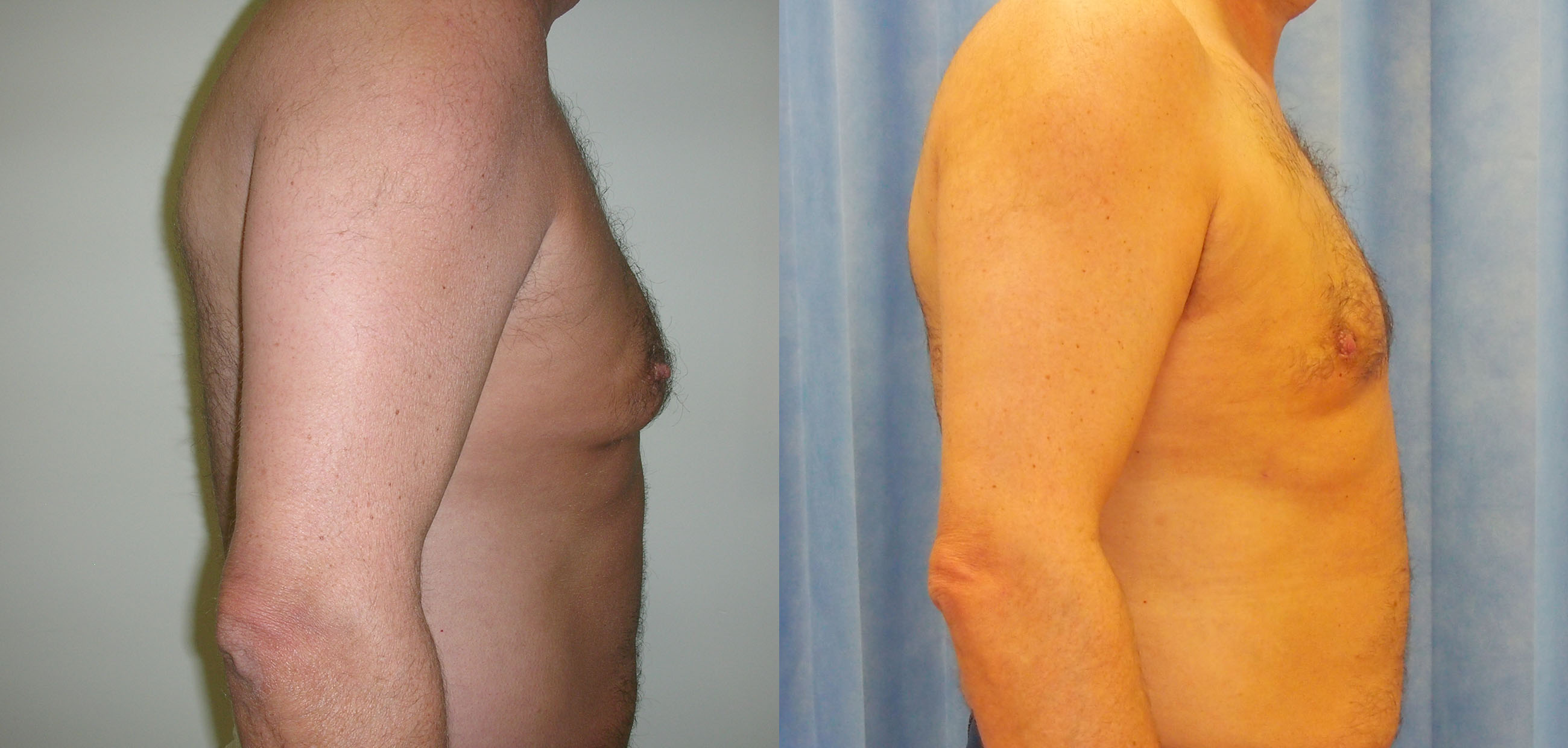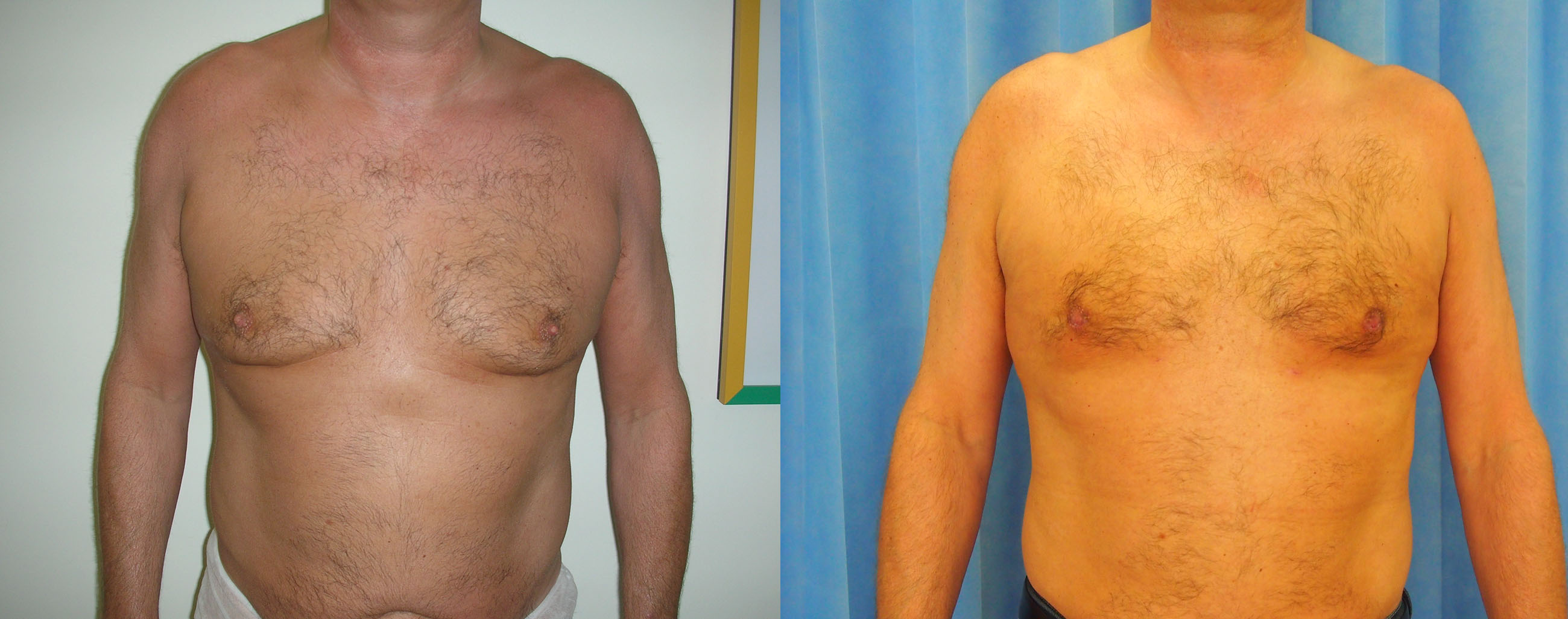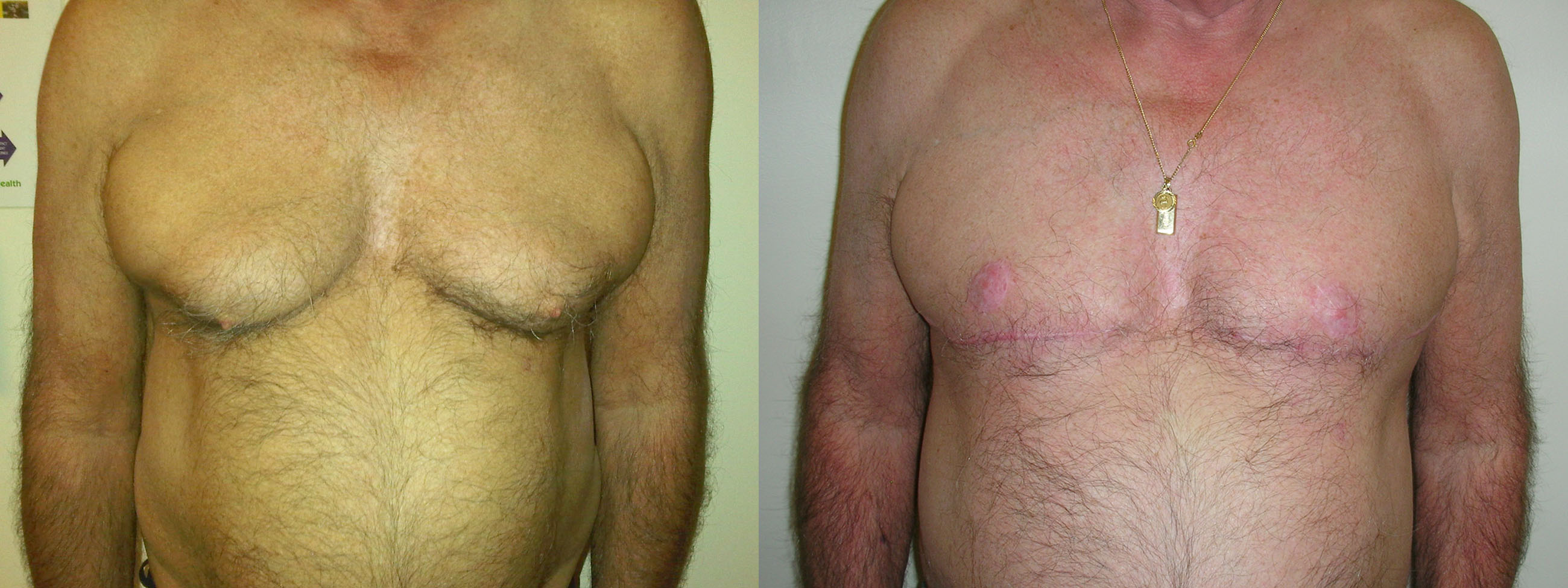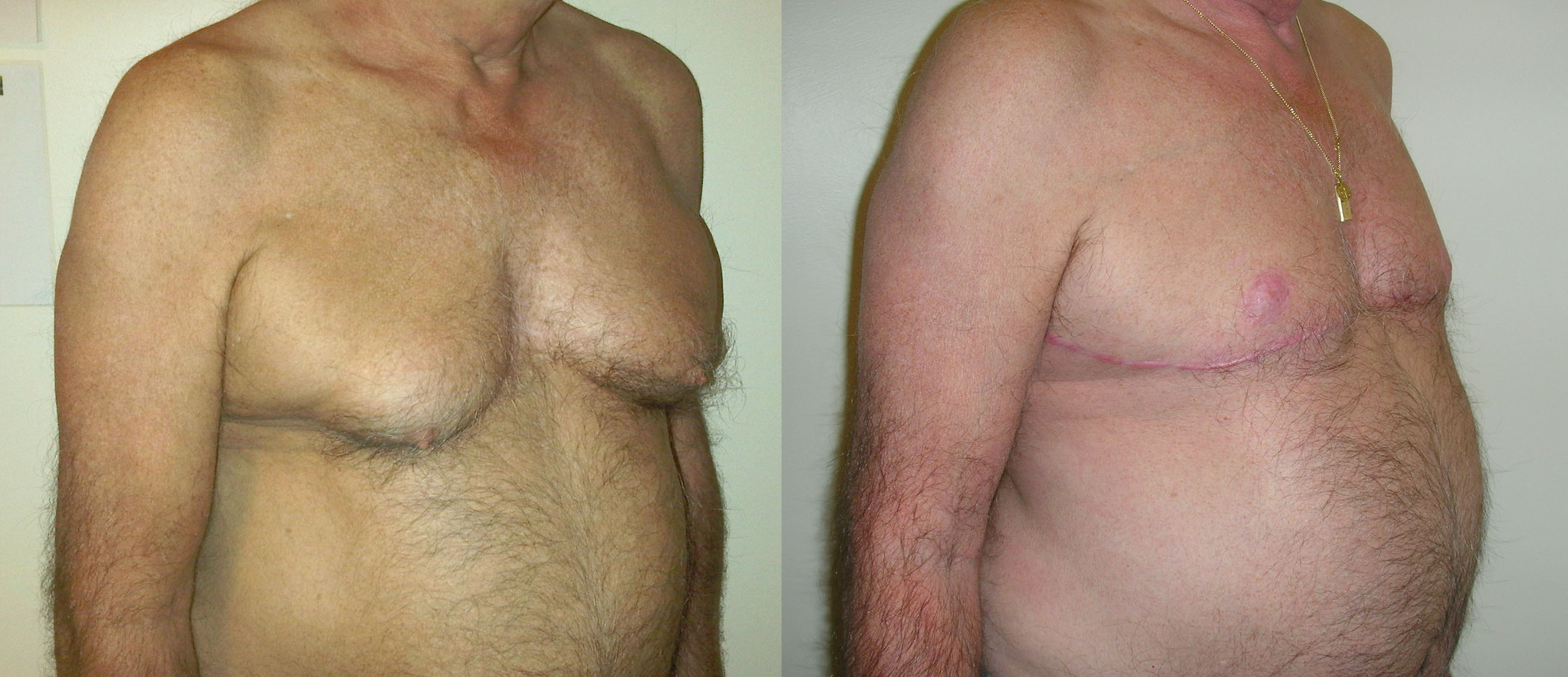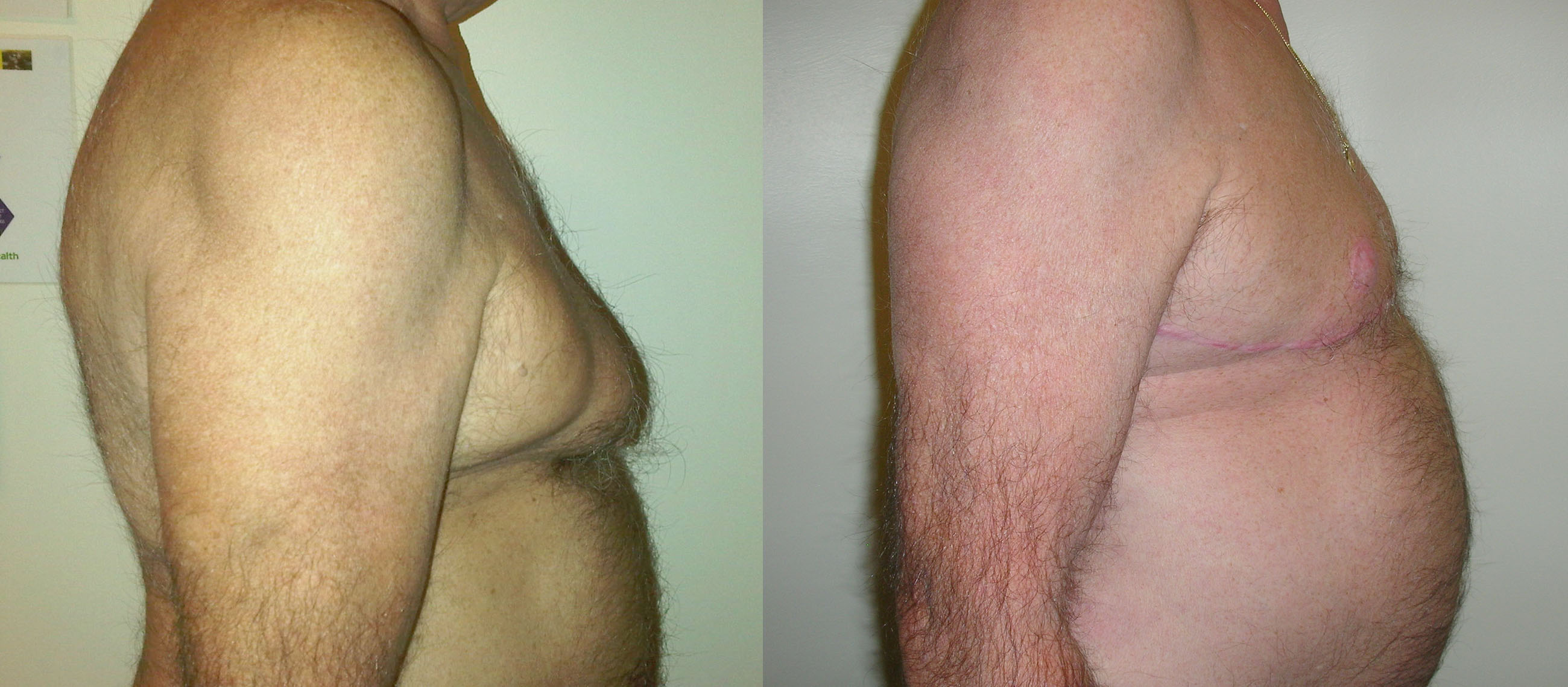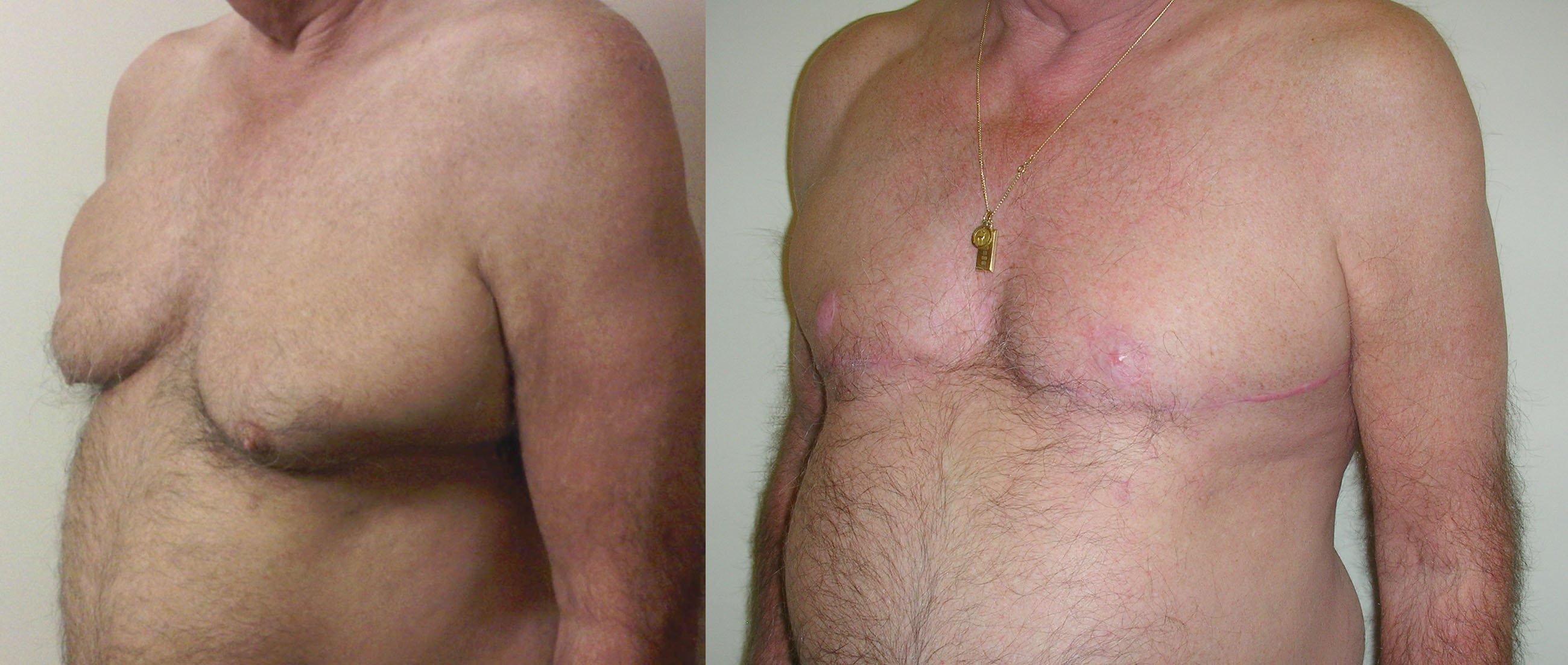Risks and limits of surgery
What if I have a medical hormone problem?
This is a rare occurrence in my experience, but in these circumstances, the first step is to treat any medical condition. Once this is complete I will reassess you to see if it has corrected your gynaecomastia. If ther is still a problem, we can plan surgical treatment.
I use ‘recreational drugs’ – can I still have the operation?
You should not take any non-prescription drugs when having surgery as it could put you at serious risk of harm. In the case of gynaecomastia, some drugs are a known cause so it would be sessential to stop theses before undergoing treatment and to not restart after treatment.
What are the risks?
All surgery carries a risk of complications and tailoring a plan that suits your medical history and general condition is an important aspect of your initial consultation. At this time I will go through the risks in detail with you and ways to reduce these.
Will it come back?
In my experience it is rare for gynaecomastia to come back if properly treated. Exceptions to this would be substantial weight gain and if you were to develp a medical condition that causes gynaecomastia in the future.
How much tissue is removed?
The aim of treatment is to remove the right amount of tissue in-keeping with your general build, so that the result looks natural.
I am losing weight. Will this affect my male breast reduction?
It is important with most cosmetic procedures that your weight is stable before you embark on them. Many men who are losing weight will find that they lose a good deal of that weight from their chest.. In contrast other men find that weight loss does not affect their gynaecomastia at all. My advice to omen in the first category is that you should complete any weight loss programme prior to embarking on male breast reduction. This has advantages that if necessary excess skin can be removed.If you are in the second category in which weight loss does not affect your chest then the timing of the operation is less critical. I would advise however again that if possible you do lose whatever weight you are planning to lose.
Aftercare
Excess breast tissue which is also known as gynaecomastia (and colloquially as ‘man-boobs’) can be can be a great source of embarrassment and suffering in men.
Male breast tissue develops in around 90% of adolescent boys around puberty. In the vast majority it resolves as they get older. Sometimes however some breast tsissue may persist or even grow. In most cases there is no cause for this but occasionally medication, recreational drugs eg. marijuana, or medical hormone conditions are responsible.
Weight gain that gets deposited in the chest can also cause male breasts and this tends to be more frequent in later life. In all, up to 60% of otherwise healthy men may be affected by gynaecomastia.
The problem this causes depends on your overall build. In some of my very slim patients, a small amount of breast tissue is obvious, wheras in those with a heavier build, the same amount might not even be noticeable.
Gynaecomastia can cause great distress. Many of my patients report that they will not expose their chests, sometimes even to those close to them and many try to disguise the problem with multiple layers of lclothing even in warm conditions. The acute embarrassment can affect relationships, exercising in the gym, occupation, clothing and confidence in general.
As well as the bulk in their chest area, some patients also report that their areolae enlarge in warm weather or in cold weather their nipples become prominent – adding to the problem.
When a patient with gynaecomastia comes to see me, I asses their general medical condition to see if there are any causative factors that require treatment first. In the majority there is rarely an identifiable cause. The next step is an assessment of the tissues that are in excess in relation to my patient’s general build. Following this a surgical plan is made bespoke to you.
Surgery for gynaecomastia is tailored to each individaualks patient. There are three tissues that may be in excess; glandular tissue (breast tissue), fat and skin.
Generally, I use Body-jet liposuction to remove the fat, but liposuction in my experience does not effectively remove the glandular tissue that may also be present. In most patients I remove this through a small incision along the lower border of the areaola. In the vast majority of young men, this is sufficient as the skin will shrink down naturally over the next few weeks once the fat and glandular tissue has been removed.
In older patients or those who have been considerably overweight, the skin may have lost its elasticity. In these patients I remove skin in addition. There are a number of techniques to do this with pros and cons in terms of effectiveness and scarring. I will discuss these with you at consultation if relevant.
If you have a small amount of gynaecomastia and a thin frame, the surgery can be carried out very effectively under local anaesthesia. In most patients however the surgery is done with you asleep and takes around 90 minutes.
When large amounts of skin and fat need to be removed the surgery can take considerably longer.
You will typically be admitted to hospital on the day of your surgery. Your hospital stay depends on the amount of tissue to be removed and varies from day case surgery to 2 nights in hospital for major tissue removal.
In clinic we will make an operative plan based on the gynaecomastia that you suffer with and your build. Once we have established this plan I will go through all aspects of the procedure with you including recovery time for healing return to work and exercise. I will also go through potential complications and risks specific to you if you have any medical conditions. In preparation for your surgery it is helpful to have loose pyjamas or a large T-shirt to wear for your post-op stay. On the day of your operation I will meet you with my anaesthetist and we will go over your operation again and I will mark out your chest in preparation for your surgery.
Once your operation is complete you will be taken to the Recovery Room where most patients wake up gently and are generally comfortable. As male chest reduction does not involve entering any body cavities the discomfort following surgery is moderate rather than severe. Nevertheless you will be supplied with strong painkillers as required.
Once you are fully awake you will be encouraged to get up and gently walk around.
You will be supplied with a garment that supports the tissues and encourages the skin to shrink and you should wear this for 4 weeks.
I will see you again on the ward and if you are having your surgery as a daycase, preparations will be made for your discharge later that day or the following day if you are staying for 1 night.
I ask my patients to keep their wounds dry and the dressings undisturbed for the first week. After this I will see you in my clinic and remove all the dressings and any sutures that ned to come out. From this time onwards you can start to shower and apply a small amount of Sudocrem cream to your wounds. This acts as a barrier.
During your first week at home it is important that you take plenty of rest but keep mobile. The simplest way to achieve this is walking both indoors and outdoors. You should avoid any heavy lifting and any vigorous activities including the gym.. After a week to 10 days you may drive for short essential trips and following two weeks you can usually build up to your normal pattern of driving. If your work is office based or requires light duties only you may find you are able to return to work at within 10 days. If your work involves any degree of heavy manual work I recommend that you take at least four weeks off.
During your recovery time I will keep a check on your progress in my clinic initially at one week then again at two weeks after your operation. This is followed by a four-week appointment and then one at three months to check how things are settling down.

